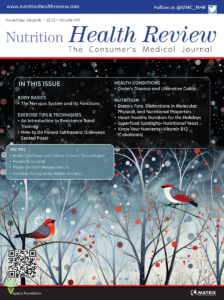In many areas of the United States, spring allergies begin in February and last until the early summer months. Tree pollination occurs in the early part of the year, followed by grass pollination in spring and early summer and ragweed in the late summer and early autumn months. Mild winter temperatures can cause plants to pollinate early. Frequent rain in the spring promotes rapid plant growth that leads to an increase in mold—this can cause symptoms to persist until mid-to -ate autumn.
Fall allergies are most commonly caused by ragweed, a plant that grows wild in many areas of the United States, and especially in the Eastern and Midwestern states. Ragweed blooms and releases pollen from August to November. Those living in the United States can expect the highest levels of ragweed pollen to occur in early to mid-September. Other plants that cause autumn allergies include the following:
- Burning bush
- Cocklebur
- Lamb’s-quarters
- Pigweed
- Sagebrush and mugwort
- Tumbleweed and Russian thistle.
Climate factors that can influence the severity of seasonal allergy symptoms include the following:
- Tree, grass, and ragweed pollens thrive during cool nights and warm days.
- Molds grow quickly in heat and high humidity.
- Pollen levels tend to peak in the morning.
- On a day with no wind, airborne allergens are grounded.
- Pollen counts surge on windy, warm days.
SEASONAL ALLERGY MANAGEMENT AND TREATMENT
If you feel like you’re always getting sick with a cough or head congestion, it’s time
to see an allergist. You might think pollen is causing your suffering, but other substances might be involved as well. More than two- thirds of spring allergy sufferers actually have year-round symptoms. Your best resource for finding the source of your suffering and stopping the symptoms is an allergist.
Your allergist will work with you to devise strategies to avoid your triggers. Some of these strategies might include the following:
• Monitoring pollen and mold counts regularly; this information can easily be found online during allergy seasons.
• Keeping windows and doors shut at home and in your car during allergy season.
• Knowing which pollens you are sensitive to so you can more accurately predict your symptoms. During tree and grass pollen season (spring and summer), levels are highest in the evening. During ragweed pollen season (late summer and early fall), levels are highest in the morning.
• Wearing a National Institute for Occupational Safety and Health (NIOSH)- rated N95 filter mask when mowing the lawn or doing other chores outdoors, and taking appropriate allergy medication beforehand.
An allergist might also recommend one or more medications to control symptoms. Some of the most widely recommended drugs are available over the counter. Others, including some nose drops, require a prescription.
If you have a history of prior seasonal problems, allergists recommend starting medications to alleviate symptoms two weeks before they are expected to begin. One of the most reliable ways to treat seasonal allergies linked to pollen is immunotherapy (allergy shots). These injections expose you over time to gradual increments of your allergen, so your body learns to tolerate it rather than react to
it with sneezing, nasal congestion, and itchy, watery eyes. SOURCE: Adapted from the American College of Allergy, Asthma, and Immunology Public Website. Seasonal Allergies. Last updated December 28, 2017. Accessed February 13, 2018. https://acaai.org/allergies/ seasonal-allergies





